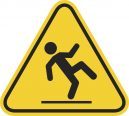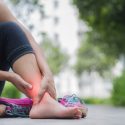
Every year, approximately 30% of Australian’s over 65 will fall (1). No other single cause of injury, including road trauma, costs the health system more than falls (2). If you’ve had a fall in the past six months, your chances of falling again are increased(3). Most elderly people fall in and around the home. If you have a serious injury, it can lead to a change in where you live.
There are many ways a physiotherapist or another health professional can assist with Fall Prevention Strategies. The best approach involves using multiple strategies such as, health promotion, exercise prescription, environmental modification, clinical assessment and injury minimisation. Many falls can be prevented by regular consultation with a health professional and having access to the correct equipment(4).
There are multiple “risk factors” for falls, but no single risk factor is the cause of all falls. The greater number of risk factors the individual is exposed to, the greater probability of a fall. Common risk factors that can contribute to a fall include:
Vision
- Have your vision checked on a regular basis, use aids as prescribed.
- More information can be found at https://www.visionaustralia.org/services/older-adults
Nutrition
- Eat healthy and nutritious food
- Drink enough fluids
- More information can be found at http://www.nutritionaustralia.org/national/resource/nutrition-and-older-adults
Medications
- Take medications as prescribed. Discuss any concerns you may have with your doctor and/or pharmacist.
- Ensure chronic diseases associated with an increased risk of falling are monitored regularly. This includes: Parkinson’s disease, arthritis, diabetes, low or high blood pressure issues, osteoporosis, history of stroke, incontinence, dementia, delirium, anxiety
Sensory and Balance Problems
- As we age our reaction time, joint stiffness and muscle weakness can contribute to falls. Poor balance, reduced sensation or proprioception (awareness of where body parts are in space) can be assessed and an exercise program and strategies provided by your local physiotherapist.
Activity
- Maintain a healthy and active lifestyle, with regular exercise to prevent your muscles weakening and joints stiffening.
- If your mobility is becoming more difficult, have it assessed by a health professional
- Weakened muscles and stiffening joints can increase your chances of falling
- Always use mobility aids as prescribed, ensure they are adjusted correctly for you
- More information can be found at https://www.myagedcare.gov.au/getting-started/healthy-and-active-ageing
Environmental Hazards / Home Assessment
- Hazard proof your home – remove slip or trip hazards such as rugs or mats; repair or replace worn areas of carpets
- Ensure there is adequate lighting, especially at night
- Consider home maintenance and modifications (eg. grab and shower rails, hand rails, ramps and other mobility aids, marking the edge of steps so they are easy to see)
- Review outside footpaths, uneven ground and /or slippery steps, keep pathways in good repair and clear of leaf litter
- If you live alone consider emergency alarms and other safety aids
- Here is a checklist for a home assessment https://www.cdc.gov/HomeandRecreationalSafety/pubs/English/booklet_Eng_desktop-a.pdf
References:
- Australian Commission on Safety and Quality in healthcare
- Clinical excellence commission for NSW government http://www.cec.health.nsw.gov.au/patient-safety-programs/adult-patient-safety/falls-prevention
- https://www.myagedcare.gov.au/getting-started/healthy-and-active-ageing/preventing-falls-in-elderly








